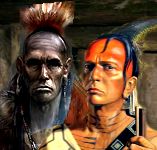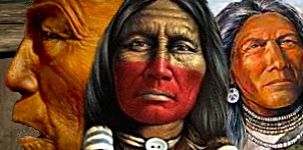 |
|
 |
|||
 |
 |
 |
 |
||
|
|
|||||
      |
cherokee marriage customs
|
Artifact Replicas|Jewelry|Clothing|Figurines|Art Prints|On Sale|Closeouts
Custom Search
What's New Cherokee Marriage CustomsCherokee Marriage Customs Between the ClansCherokee marriages were as much between the Grandmothers of a clan as between the couple themselves. It was not permitted to marry within your own clan. A potential suitor had to select a young woman from another clan. Typically, the clan leaders would be consulted before such a selection was made. Elias Boudinot wrote the following article in The Cherokee Editor on February 18, 1829 regarding Cherokee Clan marriage customs: "This simple division of the Cherokees formed the grand work by which marriages were regulated, and murder punished. A Cherokee could marry into any of the clans except two, that to which his father belongs, for all of that clan are his fathers and aunts and that to which his mother belongs, for all of that clan are his brothers and sisters, a child invariably inheriting the clan of his mother. When a young man had chosen a girl he wished to marry he would kill a deer and bring an offer of deer meat to the home of the girl he was interested in. If she chose to marry him, she cooked the deer meat and offered it to him. If she rejected the deer meat, it was assumed to be a denial of this suitor. This courtship required approval of both clans before courtship could occur. It was only permitted to court one woman at a time. Although there are examples of polygamy in the ancient culture, this practice was not generally engaged in. There were also instances of same-sex cohabitation, however, there was never a concept of same sex marriage or same sex courtships. There are historical instances of "extended families" where another male or female would cohabitate with a married couple. Provided all parties were in agreement, including the clan leaders, this conduct would be allowed. These are the only examples of same sex relationships known to have existed in ancient times. The age of consent for Cherokee young people was typically fifteen for girls and seventeen for boys, but was not a strict practice. If the couple chose to marry, the groom had to obtain the approval of his clan leaders to complete the marriage. Typically, he required the approval of his Clan Grandmother and her relatives. The bride had to obtain the approval of her mother's sister, or if unavailable, her Grandmother or Great Aunt. If all parties agreed, then the couple was permitted to marry. Clan Married LifeOnce a couple had married, they lived with the wife's clan. Since any children born to the couple were of the same clan as the woman, her brothers or male relatives typically were responsible for the social and cultural development of the children. It was the wife's male relatives who typically disciplined and taught the children, and not the father. The father's clan did have the privilege of choosing the names for the couples children. This was generally done by one of the father's sisters or Clan grandmothers. If a women's husband failed to please her, was unfaithful, or disgraced her clan, she could divorce him by simply placing a deerskin outside of their dwelling and placing his belongings on it, at which point, he was expected to leave. He could return to his own clan or move in with the unmarried men of her clan. The early Europeans, after their first contacts with the Cherokee people, were confused by the Cherokee men's inability to make quick decisions in counsel and trade meetings. It was later learned by the Europeans that the men were required to return home and discuss these matters with their wives and obtain their approval. This resulted in the early Europeans commenting and recording that the Cherokee had a "petticoat government." In a traditional Cherokee Household, the wife owned all property and the children, and the husband was always required to obtain her approval on family or clan matters. Contrary to many myths from the early Europeans, Cherokee wives were not permitted as part of the culture to "beat their husbands with a stick" for disobedience to the wife. Although it is recorded that this type of behavior did occur in instances of domestic disputes, it was not a socially approved or sanctioned practice, nor was any form of spousal abuse, whether involving the husband or the wife. The wife was required to obtain her husbands approval on matters of their children and clan affairs and work as partners in their relationship. Wives were not allowed to divorce their husbands for frivolous reasons. Divorce, as other elements of Cherokee Clan life, typically required the approval of the Clan leaders and also required a sound basis for the married woman's decision. Men were not allowed to divorce their wives or end a relationship without the approval of their clans, although a husband could request to end a marriage or relationship for valid reasons of incompatibility or infidelity. RELATED ARTICLES: cherokee wedding 
Stone Calf Limited Edition Sattler, Kirby 13.25 in. x 16.62 in. Buy at AllPosters.com Framed |
|
||||||||||||||||||||||||||||||||||||||||||||||||||||||||||||||||||||||||||||||||||||||||||||||||||||||||||||||
| ||||||||||||||||||||||||||||||||||||||||||||||||||||||||||||||||||||||||||||||||||||||||||||||||||||||||||||||||
Site Designed by: Mazaska Web Design
Hosted by: HostIt4You.com
© 1999-2008 AAANativeArts.com
+1130
file: cherokee marriage customs

